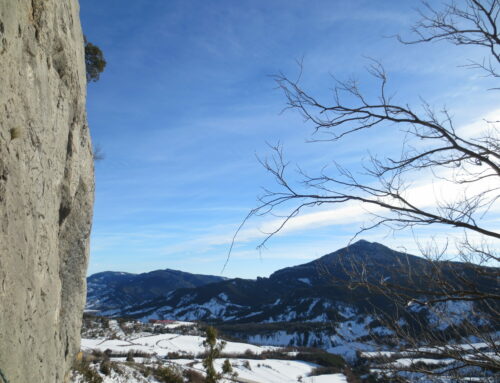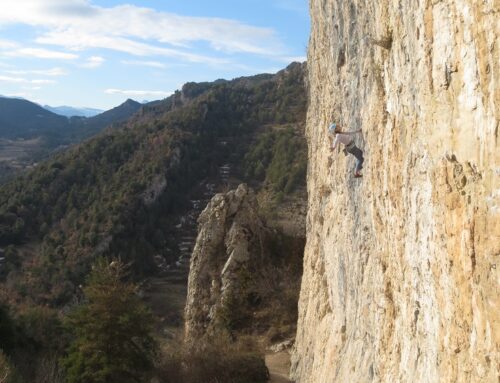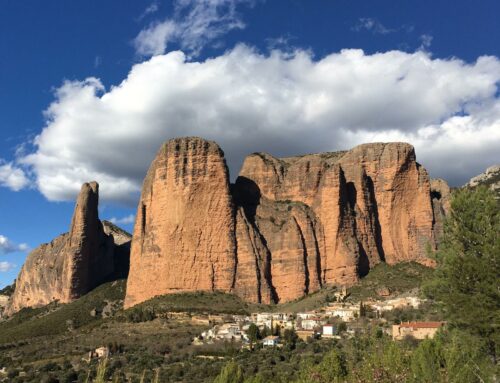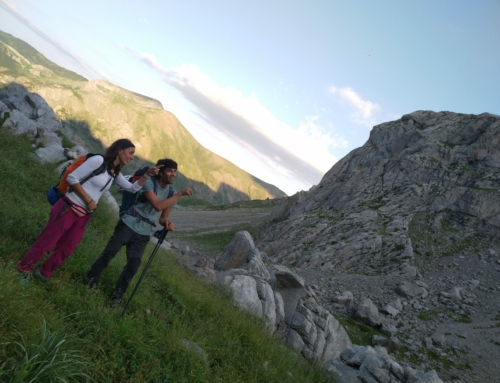Gorges du Tarn is undoubtedly one of the finest sport climbing destinations in France. The river Tarn has eroded the Causse Méjean and Causse de Sauveterre limestone plateaus into a number of steep canyons. In summer, the river is full of vacationing continentals floating downstream in rented kayaks, and on the slopes of the valley we find steep walls with some of the finest dolomite limestone in the South-East.
Guest post and photos by Jonas Wiklund
The Gorges du Tarn is a fantastic place for climbers of almost all levels. Despite going there a lot since moving to Toulouse (three hours west of the area) I’ve never climbed a bad route.
From 6a to 8b there are plenty of three-star routes in every grade. The sectors are densely packed, have short approaches (sometimes too short) and in addition, there are often three-star routes in the 6th, 7th and 8th grade on the same sector! Below 6a the routes seem to be of slightly lower quality, and from 8c and up there are just six routes (and a number of projects).
There are routes of most types in Tarn: vertical, overhanging, to roof climbing, and routes of all lengths: short, medium, long or insanely long pitches.
The insanely long pitches – from 40m to 95m — are a speciality of Gorges du Tarn, a style that the locals call “Abus” (a word of the same root as abuse). For many of those routes a one hundred meter rope is necessary, and for the longest knowledge of the two-rope, two-grigri technique is a must.
That said, there are plenty of routes of the short-and-hard variety as well, in all grades, from 4a to 8c or so.
Season
April to beginning of October. From November to February the sun never reaches the valley floor, and it is brutally cold.
Other major climbing areas
The famous Gorges de la Jonte, well known for its 3-4 pitch routes is 25 min away. Boffi in Millau can be found about 35 km further south.
Bolting
In September 2010 a bolt broke on an old hard project in Tarn. The short 8mm bolt was placed in wet soft rock and was not meant to protect lead climbing but rather for direct aid to help figure the moves. However, the climber who broke the bolt got injured and the local municipality decided to forbid climbing in the area until all bolts where replaced.
The local chapter of the French climbing federation put in over a hundred thousand euros and uncounted man-hours on rebolting the canyon. The upshot is that all routes have glue in bolts or ultralong 12mm stainless sleeve bolts. This is financed by selling the guidebook, which is a photo topo with text in English, French, Spanish, German and Italian.
In general, the bolting is ultra-safe, with very short distances between the bolts on the lower parts of the routes. However, on some routes, especially some of the harder routes the bolting becomes sparse on the higher parts of the routes. Climbers who have a hard time on long run-outs should bring a clip-stick for working routes, and take an extra minute to step back and inspect the bolting on the top part of the routes.

Said Belhaj in Gorge du Tarn
Gear
If you want to be able to climb absolutely all routes a 100m rope is good to have. On some sectors, like De fas Aqui, it is rather tricky to get by with an 80m rope. With a 60m rope, you’ll probably have enough routes to choose from for between a few weeks to a lifetime depending on your level.
I recommend to bring at least an 80m rope and at least fifteen quickdraws, some of them longer and maybe one shoulder-length sling, to get out the most of the area.
In addition, for those who want to test some classic “abus”-routes bring a hundred-meter rope, a shorter rope (at least 30m), two GriGris, at least ten long draws and up to twenty-five draws in total.
Guidebook
The guidebook is sold in most bars, restaurants and campgrounds in Les Vignes, the village closest to the climbing sectors.
Getting there
The climbing is centred around Les Baumes Basses just north of the village Les Vignes, 35 km north of Millau in the south of France. The closest big international airports are Toulouse (3 hours) and Barcelona (4 hours 30 minutes).
Editors note: If you plan on combining climbing in Tarn with the famous Spanish crags of Catalonia – check out our offer to rent a van!
Staying there
Wild camping is prohibited in the canyon, and that includes sleeping in the car. The police drive through the valley to check compliance quite often during the season. During the offseason for river sports, from mid-September to late April, the campgrounds are closed. At this time sleeping in vans seems semi-tolerated. Instead, I recommend staying in a campground. Here are three options:
Camping Le Terrados
Beldoir
Camping La Blaquiere
The campgrounds are fairly expensive in July and August (up to 28€ for two people with a car and a tent), but runs at around 12-13€ for two in low season.
We usually stay in Beldoire, which has a pool, good service buildings, and good access to the river.
More information: Tourism office of Gorges du Tarn
Shopping & food
The nearest cash machine is in Le Rozier or La Malène, the nearest shops open year-round can be found in Le Massegros.
Eating out
This region of France is known for Aligot, its variety of goat cheeses and sausages.
At the time of writing, the best restaurant in Les Vignes is in Hotel Le Parisien. For vegetarians it is difficult to find acceptable restaurants, Pizza Muse is a fairly popular pizzeria in Mostuéjouls 15 min south of Les Vignes in the direction of Milleau.









